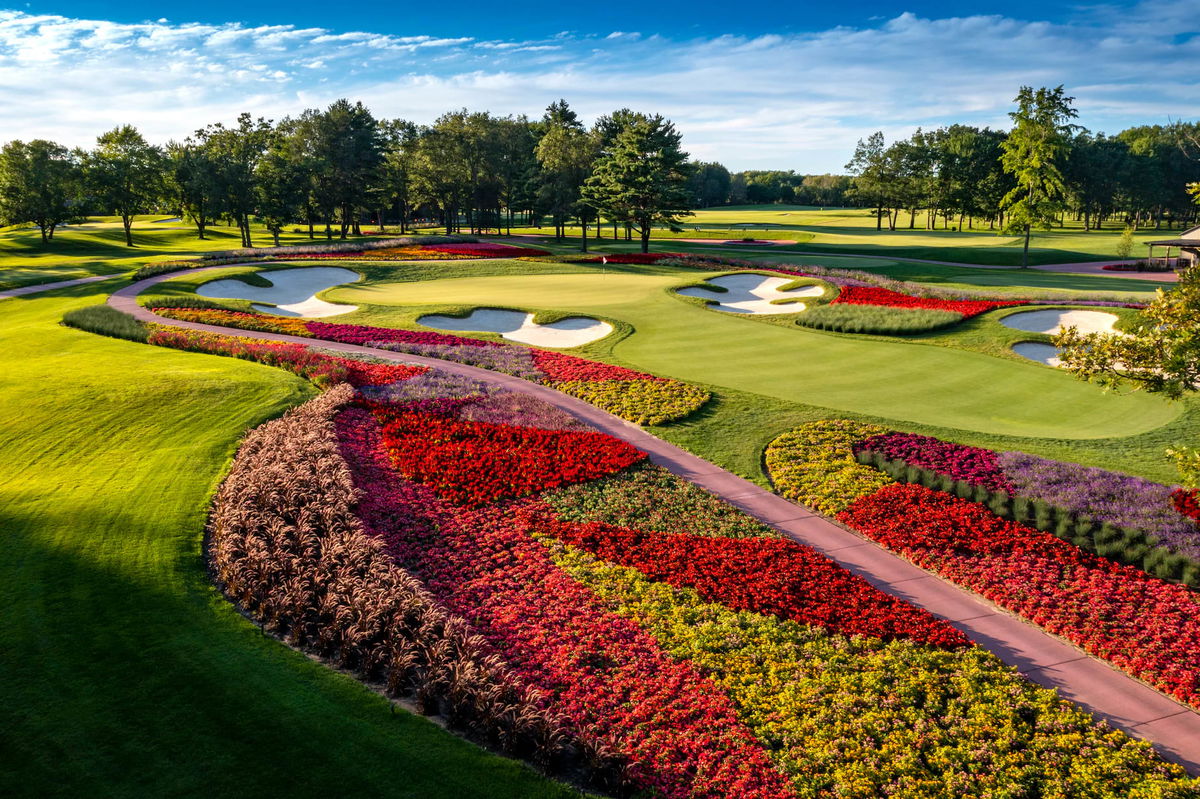
Imago
By: Fred Vuich

Imago
By: Fred Vuich
“Every day the golf course is dying.” For weeks, the Kapalua Plantation Course looked more like a wasteland than the crown jewel that usually kicks off the PGA Tour season. Grass turned yellow, then brown, and fairways cracked. The course was on the brink of collapse as Maui’s century-old water dispute left it starved of irrigation. By last weekend, it seemed unthinkable that the Sentry – the PGA Tour’s traditional season opener – could survive here. But as NBC analyst Mark Rolfing put it, two “monumental” decisions will hopefully give the dying course at least a fighting chance.
Watch What’s Trending Now!
Rolfing, talking to Damon Hack at Golf Channel, revealed the decisions that have been taken. The first of them was the PGA Tour, local sponsors, and government officials convincing Hawaii’s Water Commission to temporarily lift restrictions and allow Kapalua to draw water from a nearby source. “They somehow convinced the Water Commission to temporarily lift that restriction and allow some water to be put on the golf course from a different source. Not the source at the top of the mountain, but a source closer by.” This comes days after Brian Rolapp‘s silence on the dire condition of the course.
The second, and arguably the bigger extreme gamble, came from Kapalua’s owner, Japan’s TY Corporation. Rather than let golfers trample weakened turf, they made the costly call to shut down the Plantation and Bay Courses for 60 days starting September 2. Millions in revenue will be lost. But without such a drastic measure, the course — and along with the tournament, which saw Hideki Matsuyama‘s record-breaking performance this year or Jon Rahm‘s comeback win in 2022 — wouldn’t have had a future. “If you think about it, you can put down a lot of water on the golf course. But if they are trumping around on it…nothing is going to work. [This] is being done totally for the hope of trying to maintain that tournament and have that tournament there.”
ADVERTISEMENT
Two key decisions have restored hope for playing The Sentry at Kapalua in January. My report for @GolfCentral…https://t.co/UOV2vMBUWu
— Mark Rolfing (@MarkRolfingGC) August 30, 2025
Kapalua Resort’s situation has been a cause of concern for a while. Perched against the blue horizon of West Maui, the course has not seen a drop of irrigation since July 25! Alex Nakajima, its general manager, recently shared a plan to use whatever limited water the course gets on slow-release fertilizers. He observed that it has to be done while keeping players off the grounds so staff can begin the grim work of replacing dead grass, a sentiment which is being echoed by the decision now taken by the TY Corporation.
These monumental decisions have been made over a long fight. Uniqlo’s billionaire founder and owner of Kapalua, Tadashi Yanai, joined local homeowners and Hua Momona Farms in filing a lawsuit against Maui Land & Pineapple (MLP), the company that once owned the resort. The complaint accused MLP of neglecting the 11-mile Honokohau Stream and Ditch System that delivers water from the West Maui mountains. According to the lawsuit, the ditch has been left in a “state of demonstrable disrepair.” The plaintiffs argue this isn’t about drought — US Geological Survey data shows the watershed actually received more rainfall than Portland or Seattle.
ADVERTISEMENT
“Water is scarce, not because rain is falling in significantly smaller quantities,” the lawsuit claims, “but because MLP has failed to honor its promises to maintain the infrastructure.” To this, the MLP pushed back, saying the real issue is record-low stream flows and insisting that certain repairs were already made.
Overall, this is more than a vanity project for a resort town. The Sentry isn’t just a $20 million signature event on the PGA Tour — it’s a lifeline for Maui. The tournament pumps an estimated $50 million into the island’s economy each year and funnels money into local charities that depend on it for their survival. “It [The Sentry] is a part of their mantra. It’s a part of their life blood of the island. There are so many needy charities that really have all their revenue for the entire year…It comes from that tournament,” Mark Rolfing said.
ADVERTISEMENT
Top Stories
Tiger Woods & Charlie Woods Paid Special Homage by Annika Sorenstam’s Son at PNC Championship

Gary Woodland’s Father Chokes Back Tears Over Moving Gesture at PNC Championship

Tiger Woods’ GF Receives Emotional Message from Daughter Kai Trump After Turning 48

Amanda Balionis Has Strong Reaction as Top PGA Tour Analyst Exits Golf Channel for Rival Network

Scottie Scheffler Delivers Bad News to Tiger Woods After Sparking TGL Rumors

Saving the Sentry means saving Maui charities
The threat of losing The Sentry isn’t just about golf—it’s about the ripple effect across Maui’s community. Since moving to the island in 1999, the tournament has raised more than $9.7 million for local non-profits, with a record $747,704 donated this year alone. That money fuels everything from health care and environmental preservation to youth sports and education.
For Lahainaluna High School Foundation, one of the tournament’s six key beneficiaries, the impact is existential. Students from the school volunteer at the Plantation Course each January, and the foundation relies heavily on tournament proceeds to fund programs in wrestling, football, robotics, debate, and the band. “The foundation would be devastated without having this income. It has become the only financial support for us,” President Mark Tillman admitted.
ADVERTISEMENT
Beyond its core partners, The Sentry has spread its support widely, backing organizations like Friends of the Pu’u Kukui Watershed Preserve, Maui United Way, and Whale Trust, as well as Maui’s arts and cultural centres. Its scholarship program adds another layer, helping local students attend the University of Hawai’i and its community colleges, with plans to expand to 12 annual scholarships.
ADVERTISEMENT
ADVERTISEMENT
ADVERTISEMENT

